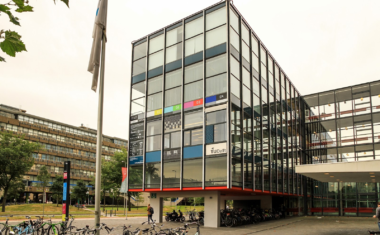Three Pipes Circular Sewer System
- 1052
- 5 min to read

About the city. Helsingborg is one of the fastest growing cities in Sweden. Since 1985, the population of 145,000 has increased by 30%.
Helsingborg has been ranked first among Swedish municipalities in the field of sustainable development for four years in a row. In 2030, they aim to become a zero-waste city.
Goal
The aim of the project is to collect and use the waste as a resource to produce biogas and fertilizer in a safe way.
Implementation period. 2020
Fact
- Today, 100% of households in Helsingborg are able to sort their food waste.
- The city’s heat supply is already 100% free of fossil fuels, with 96% of the supply coming from recovered heat and 4% from renewable energy sources.
Solutions
Steps of the project’s development:
- Broad discussions with builders, citizens, and experts in the field of water and waste management.
- Turn problems (such as a central treatment plant) into solutions (by adding a test stand and a public demonstration room to the treatment plant).
- Implementation: Food waste, toilet water, and greywater from bathing and washing are separated into three pipes at the point of use in each household. More than 2,000 new homes and offices in Oceanhamnen urban renewal district are the first in the world to use the new system on a full scale-following its development in Helsingborg.
In Oceanhamnen kitchens, food waste placed in sinks is collected in one pipe, while black water from toilets is collected in a second pipe. A third pipe collects greywater from the wash and bathwater, and it is reused for heating and cooling in each home before following two other pipes to a recovery centre nearby.
The recovery centre collects nutrients and materials for the production of biogas and organic fertilizers that meet the criteria for the end-use of waste. It also captures any remaining heat from the greywater stream to heat more homes before the minimum remaining wastewater from the three streams goes to the wastewater treatment plant.
Challenges
The main challenges were to implement a new waste, water and energy management system; all of these were previously managed by separate organizations. The new circular three-pipe sewer system intersects wastewater, water supply, and energy, and thus requires closer cooperation between the city and its utilities. Another challenge is to be at the forefront of using the EU End of waste criteria for recycled nutritious products and to convince the traditionally conservative water sector that circular wastewater systems can be an economic method to address current and future environmental challenges.
Team
The City of Helsingborg, NSR (Municipal Waste and Recycle company), NSVA – The municipal wastewater company
Timeline
The impact of the project is that the reduction of greenhouse emissions may be decreased by over 50% compared to the traditional system, cutting energy and water consumption and landfill waste to an absolute minimum.
If you notice an error or inaccuracy in our editorials, please email [email protected] so we can look into it.






